Alesia (52 BCE)
Q131386Siege of Alesia (52 BCE): one of the most important battles during Caesar's conquest of Gaul. After he had taken the Gallic town, only mopping-up operations remained.
War in Gaul
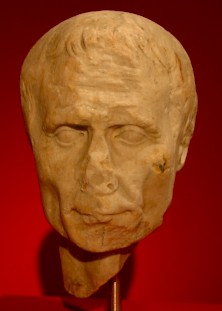
In 58 BCE, Julius Caesar started the conquest of Gaul, to put an end to the (perceived) Gallic threat to Italy. After two campaigns, he had reached the Middle Meuse and the Ocean, which was sufficient to boast that the mission had been accomplished. However, when Caesar was trying to invade Britain, the Gauls started to reorganize themselves.
In the winter of 54/53, the tribes of Gaul revolted. The Belgians, in the north, started the rebellion. Eburones, commanded by Ambiorix, destroyed the Fourteenth Legion and it took Julius Caesar a whole year before he had restored order - or better: before he had killed all inhabitants of the general area between the rivers Meuse and Rhine.
Next year, 52, the Gauls unitedly rebelled under Vercingetorix, a young, charismatic nobleman. The second insurrection was well-timed, because the situation in Italy was unquiet too, and Caesar could not be reinforced from the south. Vercingetorix tried to cut off the lines of contact of Caesar's twelve legions (about 50,000 legionaries, with allies). The Gauls destroyed their towns and stored their food supplies in several well-defended towns. The Romans would be forced to attack these towns, which implied that they would have to find their food in a restricted, well-defined area, where the legionaries would be easy targets for the Gallic cavalry. For the first time during this war, the Romans had to defend themselves.
Alesia
However, Caesar was able to regain the initiative and captured Bourges, an important Gallic stronghold (text). He could now resupply his troops, and although he was unable to take Gergovia, he forced Vercingetorix to regroup his enormous army and occupy Alesia, a town of the Mandubii, where the final battle of the Gallic War was to take place. The town, which was called Alisiia by its inhabitants, has been identified with modern Alise-Ste-Reine. (The Roman siege works have been excavated in the nineteenth century and the finds are currently on display in the Musée des Antiquités nationales in St.Germain-en-Laye, near Paris.
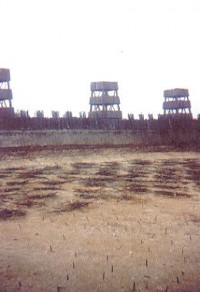
Because the Romans were in the minority, they surrounded Alesia with large fortifications, which were about 15 km long. Gallic warriors who wanted to break out, had to cross several obstacles:
- a field of stimuli, wood blocks with iron hooks fixed in them;
- a field of lilies, sharpened stakes in pits;
- a field of tombstones, impenetrable artificial underwood;
- two trenches;
- a palisade with towers.
The excavations have shown that the works were never fully completed. Still, these defenses were sufficient to make sure that the Gauls would not escape. It would have taken many moments to cross the obstacles, and the soldiers would have been exposed to Roman missiles.
The siege begins
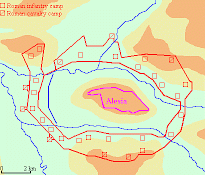
Still, Vercingetorix' strategy was working. He had managed to pin down the Romans, who had to find food in the immediate neighborhood, where they would be exposed to Gallic cavalry and a relief force commanded by Vercassivellaunus. To keep this second army out, the Romans had to build a second line of defenses.
If Vercassivellaunus had appeared in time, the Roman position would have been very precarious, but he was late. In Alesia, Vercingetorix was forced to send away all his horses and part of his troops, who managed to break through the Roman lines. Later, the citizens of Alesia were expelled as well; the Romans did not allow them through their lines, so that they were caught between the Gallic village and the enemy walls. They would have died from hunger, but fortunately, the end of the siege was near: the relief force finally arrived, and took up a position southwest of Alesia.
The decisive fight
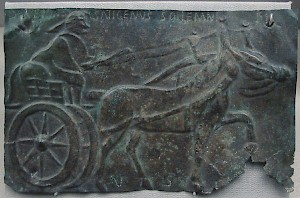
By now, the second ring was almost closed. The only weak spot in Caesar's double line of siege works was a small gap in the northwest. The Gauls desperately needed to break through this gap, because in Alesia, food was scarce and the besieged Gauls needed either to break out or to prove to the Romans that their siege was futile. Attacking Roman foragers was insufficient: an open battle had to be fought. This was exactly what Caesar had been preparing for: a Gallic attack over the stimuli, lilies, grave stones, and trenches.
It was, on our calendar, 30 August; on the Roman calendar, it was the 23d of September. The first clash was a cavalry fight west of Alesia, at a plain now called Les Laumes, which ended inconclusively. The aim of the Gallic horsemen may have been to make a tour around the siege works, to find the weak places. In his Commentaries, Caesar claims that his men had won the fight, but he cannot deny that the relief force could stay where it was. Worse, Gallic spies soon discovered the gap in the northwest.
Next day, both sides prepared for battle, and there was only one clash in the evening, during which the Roman commander Mark Antony distinguished himself.
The preliminary movements leading to the main clash started on the evening after an uneventful third day. The Gallic relief force was divided into two columns. One of them would attack at Les Laumes; at the same time, Vercingetorix would push to the west from Alesia. While these forces were hammering at the western part of the Roman siege works, the second column of the relief force would surface from behind the hills in the northwest, and attack the weak spot during the afternoon of the fourth day.
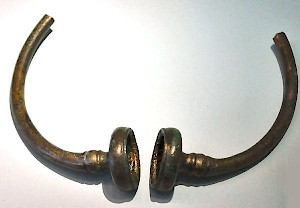
If we are to believe Caesar's description, the Gauls came close to victory. The Roman lines west of Alesia withstood the double attack, but in the northwest, the situation was precarious. Caesar sent his colonel Titus Labienus to the threatened sector. At the same time, Vercingetorix had broken off his attack, and decided to turn south, from where Labienus had withdrawn his men. Caesar still had a reserve, commanded by Decimus Junius Brutus and Gaius Fabius, and later joined in the struggle personally. Vercingetorix was pushed back, and his men returned to Alesia.
Only the northwestern sector was still threatened. Labienus had brought 39 cohorts to that place, but -if we are to believe Caesar- it was only the arrival of the general himself, recognizable because of his red mantle- that decided the battle: the discouraged Romans suddenly got new energy, and pushed back their enemy. The Gallic attack had failed, and Gaul was to become part of the Roman world.
Caesar's account is very artful: everything depends on one single siege, Alesia; during this siege, all is decided on one single day; during that day, one single fight really matters, the one in the northwest; and the fight over there is decided by one man, Julius Caesar. Things may have been a bit more complicated; but Caesar had not sent all his troops to the western sector and had kept reserves to reinforce the northwest - he could rightfully claim that it was his generalship that won the battle.
Surrender
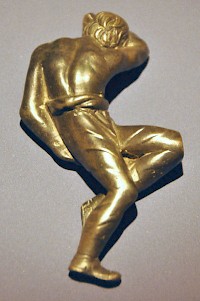
Next day (3 September 52), the Gallic leaders in Alesia met, and Vercingetorix said that they ought to decide what to do. They sent envoys to Caesar, who demanded them to hand over their weapons, and waited for the enemy leaders to arrive. The tribal leaders came and handed over Vercingetorix. At least, this is what Caesar writes, stressing that the Gauls themselves abandoned their leader. It was a way of discouraging future rebel leaders, and it is probably not what really happened: according to Cassius Dio, Vercingetorix remained in charge to the very last moment, and surprised Caesar by appearing unexpectedly.note
Nor was it really the end of the war: mopping-up operations continued for two summers. However, Alesia had been decisive. The Romans had gained control of the situation again. About one million Gauls had been sold as slaves and an equal number had been massacred; the remaining five million had to accept Roman rule.